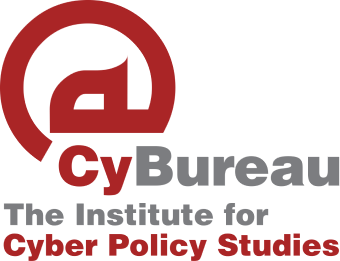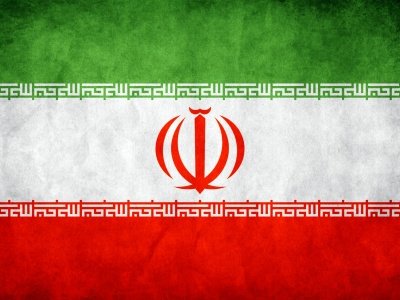Internet cafe in Iran
For many young people in Iran, the Internet serves as a two-directional tool they can use to both express themselves with a certain degree of freedom, and one through which they can search for information while exposing themselves to issues which are forbidden by the Iranian regime.
In a country where public behavior is supervised and regulated, the Internet transforms the younger generation’s lifestyle, and enables them to express themselves freely despite the difficulties imposed by rigid state control. But they are at risk even on the Internet, where they have become the target of the activities of conservative factions in the country whose purpose is to restrict the use of the Internet, as they have done with satellite television, under the pretext that the “immoral” influences of Western culture should be obstructed.
Distribution
Despite the fact that the number of Internet users in Iran has soared by 90 percent in the last year, only about three million (half of them under 25) out of a total population of 65 million have access to the Internet.2 By the middle of 2001, there existed about 450 Internet cafés in Iran, and they were opening at the rate of one a day.3 A news release in 2002 mentioned a number of 1,500 Internet Cafés in Teheran4, while it indicated that more could be found in other major cities of the country.
It is estimated that the first Internet Cafés in Iran opened in August 1998, while there are two kinds of Internet café service providers: centers which once served as computer training schools (including public institutions), and coffee shops that have allocated part of their space to Internet activities. Part of the institutions that provide those services are not even Internet cafés, but rather Internet training centers located in apartments, where a number of computer terminals have been made available to any guest or client. 5
Target audience and types of activities
The majority of the Internet café regulars are young people who use the Internet on a regular basis to communicate with relatives in Europe and the United States.
It seems that the major reason which brings Iran’s younger generation to the Internet cafés, is their sense of seclusion and loneliness, both for socio-personal and geopolitical reasons, and due to the country’s strict isolationist policies. The Internet serves as the perfect communication tool for youth in Iran who wish to socialize freely with members of their generation within or across the borders of the country. The advantages of this powerful means of interaction are expressed in numerous forms:
- Unconstrained communication with other members of the younger generation within Iran
- Chat – an alternative medium of communication through which Iranian youth may not only “meet”, but through which they can also freely express their opinions
- News and information on current events in Iran and abroad
- Use of the relevant discussion forums
- Anonymous surfing across the Internet as an anonymous and occasional Internet café user, as opposed to surfing from home or from work which could be traced6
- Browsing of reformist Internet sites to circumvent censorship and the crackdown on reformist press7
- Sharing by means of electronic mail
- Information sources for students for research purposes
- Downloading of Western music files
- Information about Iranian artists living in exile in the West
- Consumer information such as the latest fashion news reports
- Blogs – Iran has witnessed the launching of 20,000 Web logs -online diaries – the majority of which are created by women
Since private Internet Service Providers only dispose of an antiquated and overloaded copper cable-based infrastructure to provide the needs of a mounting public demand, Internet users often subscribe simultaneously to several ISPs to guarantee effective access to the Internet.
In most cases, users are connected through analog modems to regular phone lines, which provide particularly slow connections. There are only few service providers that are capable of providing faster connections.
Objectives of censorship
1. The obstruction of the “immoral” influences of Western culture.
2. Exogenous factors – the escalation of tension between Iran and the United States after the Iraq war has increased pressures from the conservative authorities to blot out communication channels with the West.
3. Domestic factors – the constraint of reformist activities and other attempts to challenge the establishment.
4. The crackdown on competition in the domestic telecom market – in May 2001, over 400 Internet cafés were closed in Tehran by the police for functioning without adequate licenses. According to local reporters8, the move was aimed at remedying the large losses the cafés were inflicting on the monopoly of Telecommunications Company of Iran (TCI) by offering low-cost “voice over IP” (VOIP)
telephone calls abroad. Nevertheless, allegations that the TCI was behind the crackdown were denied. But there were reports in the press which claimed that the clampdown was likely to put around 5000 people out of work and that such repression contradicts Iran’s move toward privatization and greater openness to the outside world.9
Censorship measures
- A massive shut-down of Internet cafés
- The banning of youth’s favorite Internet sites – in May 2003 the press said a list of 15,000 sites had been drawn up by the authorities to prevent access to “immoral sites” as well as sites which make fun of religious and political figures in the country. Several of those banned sites are linked to reformists, to radio stations that broadcast in Farsi, and others10
- The enactment of restrictions limiting access to ISPs
- The creation of software and technologies to obstruct Internet access
- The filtering of Internet activity:
1. Chats – it was reported that 70 youngsters were arrested for meeting through an illegal online dating site. That report also suggested the authorities had monitored the chat-room they had been using.11
2. Blogs – In April 2003, Sina Motallebi, the man behind the prominent weblog http://www.rooznegar, became the first blogger to be put behind bars.12
Means of struggle – enforcement versus circumvention
When it comes to coping with the regime’s policies, the public faces two kinds of enforcement:
1. In some cases, ISPs install their own filtering measures to prevent their clients from accessing “immoral sites”.13
2. Others, such as Internet café owners, physically supervise their customers monitor screens and browsing activities.14
On the other hand, local users and exiled Iranian bodies operate in various ways to circumvent existing obstructions, mainly by browsing the Internet as anonymous users, while following specific instructions available on the Internet, which provide explanations about the advantage of using an internet café where browsing the Internet can be done anonymously.15
In conclusion, it seems that the Internet, and Internet cafés in particular, provide Iran’s younger generation and reformist groups with an alternative, though narrow16, channel through which they can free themselves, and no matter how briefly, from the strictures of the local lifestyle, and somehow enjoy a more outspoken experience, where they can communicate unconditionally and directly with various types of people in the country and outside the country. This includes communication with the opposite sex, as well as unhindered access to information and various files from diverse domains.
1 Firouz Sedarat, “Iran Internet use at risk from conservatives”, ARTicles, 18-June-2003
http://www.16beavergroup.org/mtarchive/archives/000228.php
2 Ibid.
3 Molly Moore, “Web nets teenagers in Iran”, The DAWN, 06-July-2001
http://dawn.com/2001/07/06/int17.htm
4 Reuters, “Iran reformers use Net to fight press ban”, News.com, 05-August-2002
http://news.com.com/2102-1023-948403.html
5 Barmak Bahremand, “Tehranis also go to Internet Cafés”, Payame Emrooz
http://www3.estart.com/iran/lifestyles/theranis.html
6 soc.culture.iranian, “Re:IRVAJ Blocked from Iran, Can Use Proxy to Access”, Google,
14-May-2003
http://groups.google.co.il/groups?hl=iw&lr=&ie=UTF-8&inlang=iw&selm=3767f8c6.0305141004.570949cd%40posting.google.com&mum=7
7 Reuters, “Iran reformers use Net to fight press ban”, News.com, 05-August-2002
http://news.com.com/2102-1023-948403.html
8 Reuters, “Iran Clamps Down on Net Cafes”, Wired News, 15-May-2001
http://www.wired.com/news/politics/0,1283,43815,00.html
9 AFP, “Tehran police crack down on Internet, 400 cybercafes closed: paper”, soc.culture.Iranian, Google, 13-May-2001
http://groups.google.com/groups?selm=cwvL6.188%24RK4.4134%40news
10 BBC News, “Iran steps up net censorship”, BBC, 12-May-2003
http://news.bbc.co.uk/2/hi/technology/3019695.stm
11 Firouz Sedarat, “Iran Internet use at risk from conservatives”, ARTicles, 18-June-2003
http://www.16beavergroup.org/mtarchive/archives/000228.php
12 The petition for his release: http://petitiononline.com/sina/petition/html
13 Molly Moore, “Web nets teenagers in Iran”, The DAWN, 06-July-2001
http://dawn.com/2001/07/06/int17.htm
14 Barmak Bahremand, “Tehranis also go to Internet Cafés”, Payame Emrooz
http://www3.estart.com/iran/lifestyles/theranis.html
15 soc.culture.iranian, “Re:IRVAJ Blocked from Iran, Can Use Proxy to Access”, Google,
14-May-2003
http://groups.google.co.il/groups?hl=iw&lr=&ie=UTF-8&inlang=iw&selm=3767f8c6.0305141004.570949cd%40posting.google.com&mum=7
Sam Ghandchi, “PROXIES OF PARTICULAR INTEREST TO THOSE SURFING THE NET FROM IRAN”, IRANSCOPE, 7-March-2002
http://ghandchi.com/119-Proxy.htm
16 As a result of the monitoring over browsing contents, of the lack of privacy involved with surfing the Internet in public spaces, of prices paid which may well be higher than permanent home connections, and of the relatively slow browsing speeds of most Internet cafés, and so forth.

